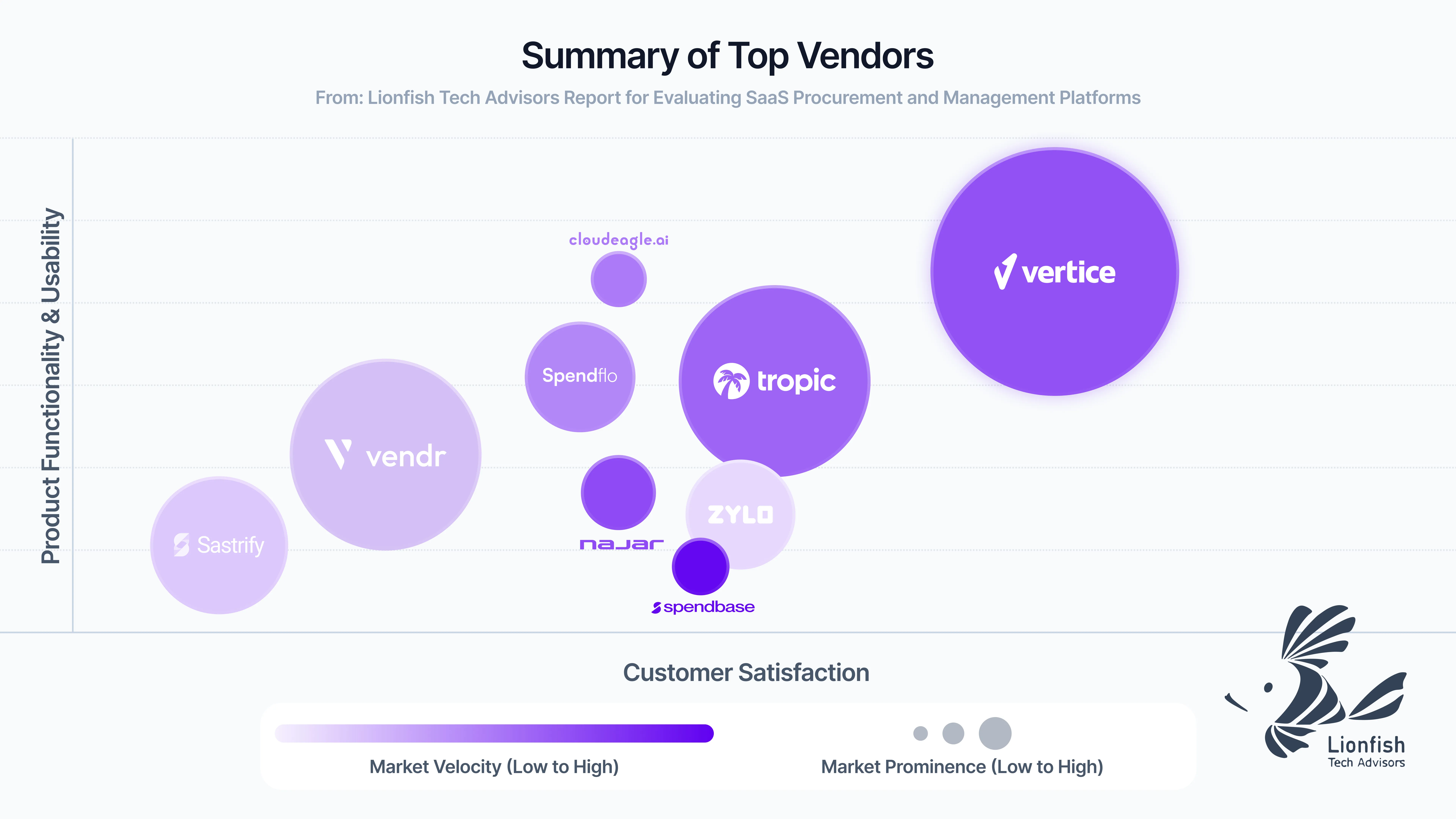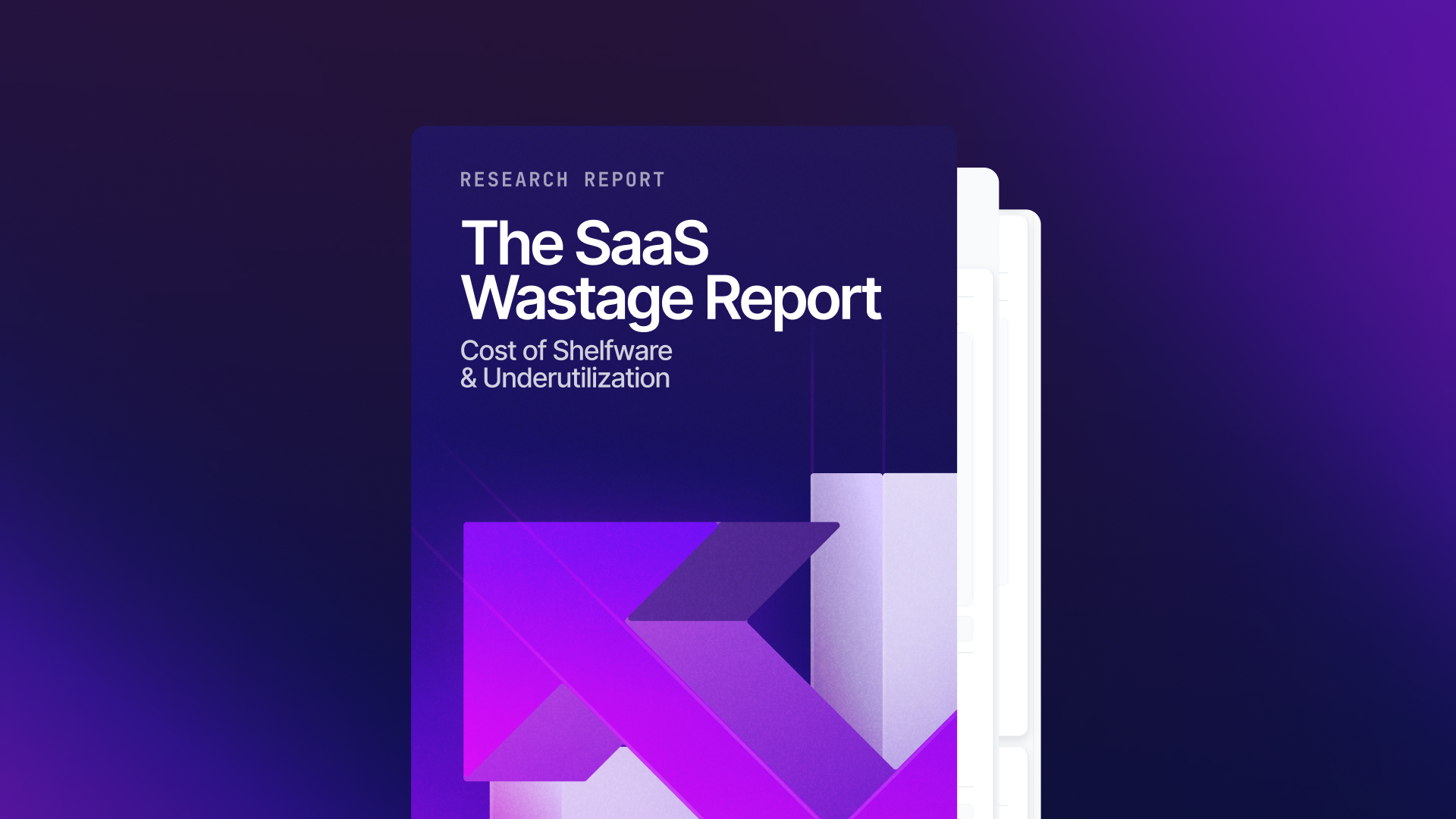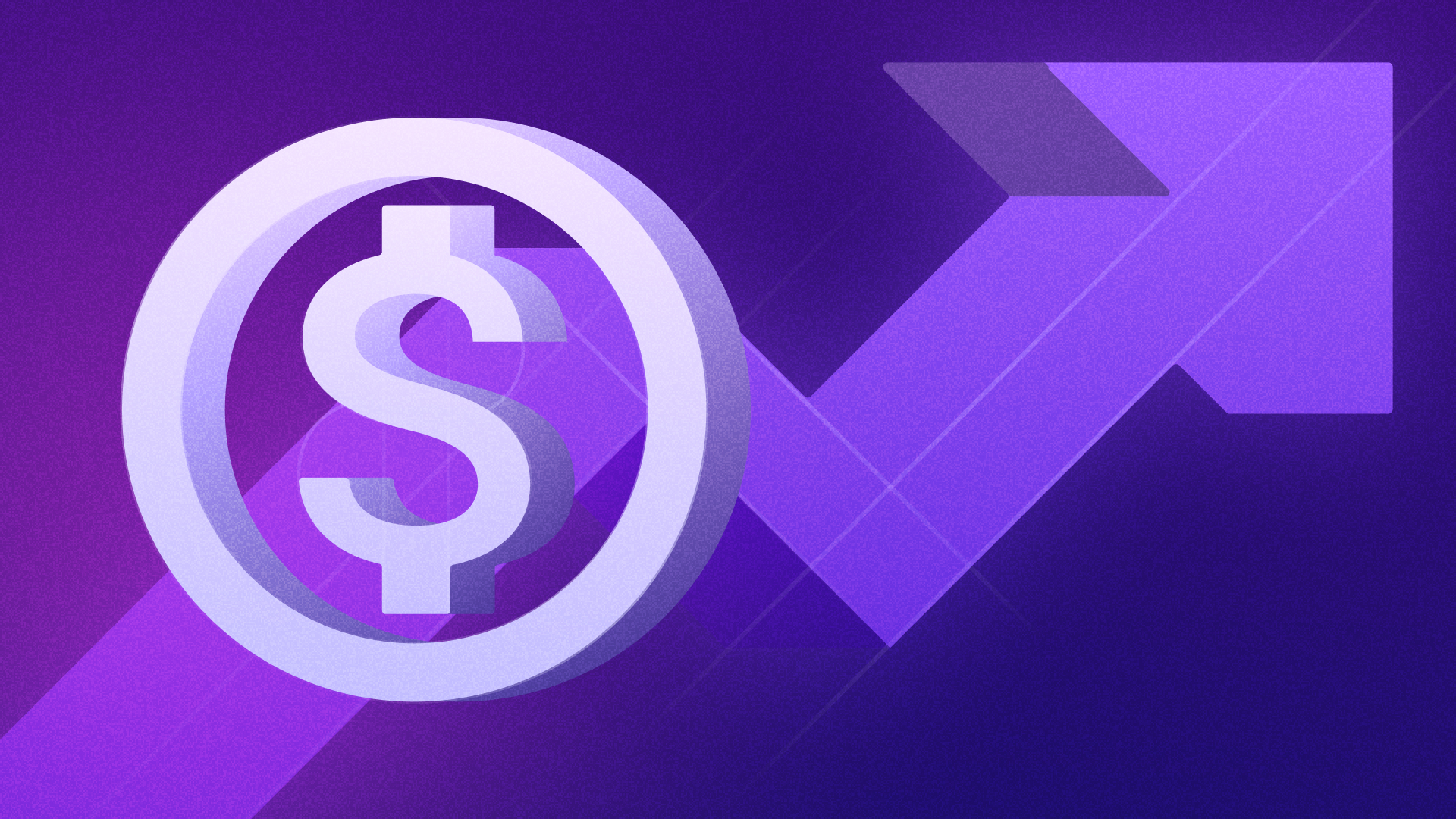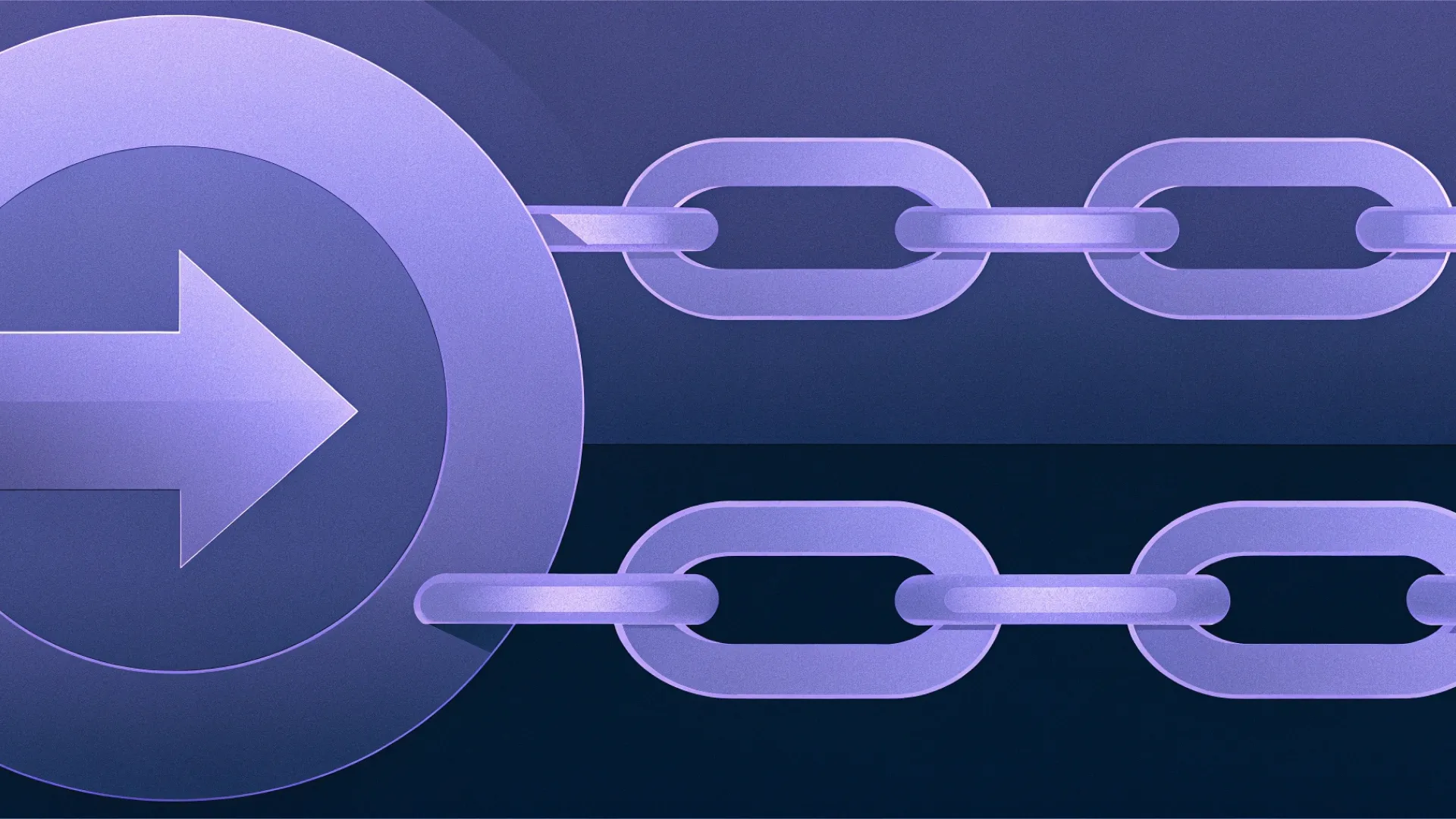.webp)
.webp)
.webp)
.webp)
Take a self-guided tour of the platform.
See how your procurement function compares to industry standards
See why Vertice is trusted by top procurement leaders.
Take the Procurement Maturity Assessment to benchmark your processes and recieve personalized recommendations for improvement.



Vendors often hold the cards in SaaS negotiations, but top-performing teams are using benchmarking data to win back control and level the playing field.
With access to accurate supplier benchmarks, companies can more easily compare price, performance, and product fit, putting them in a stronger position to secure better deals while reducing long-term risk.
In this guide, we break down exactly how to use procurement benchmarking to negotiate smarter, reduce spend, and select the right vendors.
What is benchmarking in procurement?
Benchmarking in procurement is the process of comparing solutions – in this case software – across several dimensions to determine the best fit for your business.
While price tends to be the initial consideration – which comes as little surprise given how SaaS costs are rising 11% each year and companies are under increasing scrutiny to minimize this spend – basing vendor selection solely on pricing rarely leads to optimal outcomes.
Procurement leaders must also evaluate factors such as functionality, support, and reliability to ensure that the chosen vendor aligns with the organization’s specific needs, and that potential risks are mitigated through careful selection and better contract terms.
Benchmarking doesn’t just inform vendor selection though. It also directly strengthens your negotiation position, by providing the data needed to challenge pricing, set realistic expectations, and push for more favorable terms.
Why software pricing benchmarks are still crucial
SaaS contract negotiations are not only resource-intensive with each one requiring an average of 21 days to complete, but procurement leaders are also under constant pressure to maximize savings, manage risk, and deliver results in an increasingly fragmented tech environment.
The result?
An unsustainable load on an already stretched team.
To complicate matters further, the average software stack now consists of 132 applications, growing at an annual rate of 11%, with 89% of those contracts subject to auto-renewal clauses.
For the vast majority of procurement teams, there simply isn’t enough time in the day to scrutinize and negotiate all of these contracts in detail. And even when there is, many organizations lack the pricing intelligence needed to secure the most optimal outcomes.
This gap in visibility leads to significant overspending, with our data showing that 90% of companies overpay by an average of 26%.
At the heart of the issue is a lack of reliable pricing benchmarks. Without accurate pricing intel, it’s virtually impossible to understand where a quote falls in the market.
Vendor list prices often aren’t reflective of actual deal values, and final pricing is influenced by a host of factors – from contract length, terms, number of licenses, and plan types to name a few. Even the most experienced procurement professionals can find themselves at a disadvantage without this insight.
This is where pricing benchmarks become indispensable. They offer real-time data on what similar companies are paying, providing teams with the clarity and leverage needed to challenge inflated pricing, strengthen their negotiating position, and deliver measurable savings.
But while pricing benchmarks are essential for leverage, they are only the starting point. Supplier benchmarking data should also be used in procurement to assess vendor fit, mitigate risk, and maximize long-term value across the entire tech stack.
Why procurement benchmarking is about more than just price
Focusing solely on price overlooks a key part of vendor selection: risk.
Capability benchmarking helps you evaluate whether a vendor can truly deliver, based on integration needs, scalability, support, and long-term fit. It ensures you’re not just saving money, but avoiding costly mistakes such as poor adoption, technical limitations, or being tied into inflexible contracts.
Rather than looking for the cheapest solution, you should ultimately be identifying the vendor that best aligns with your business needs, shifting the conversation from cost alone, to capability and fit.
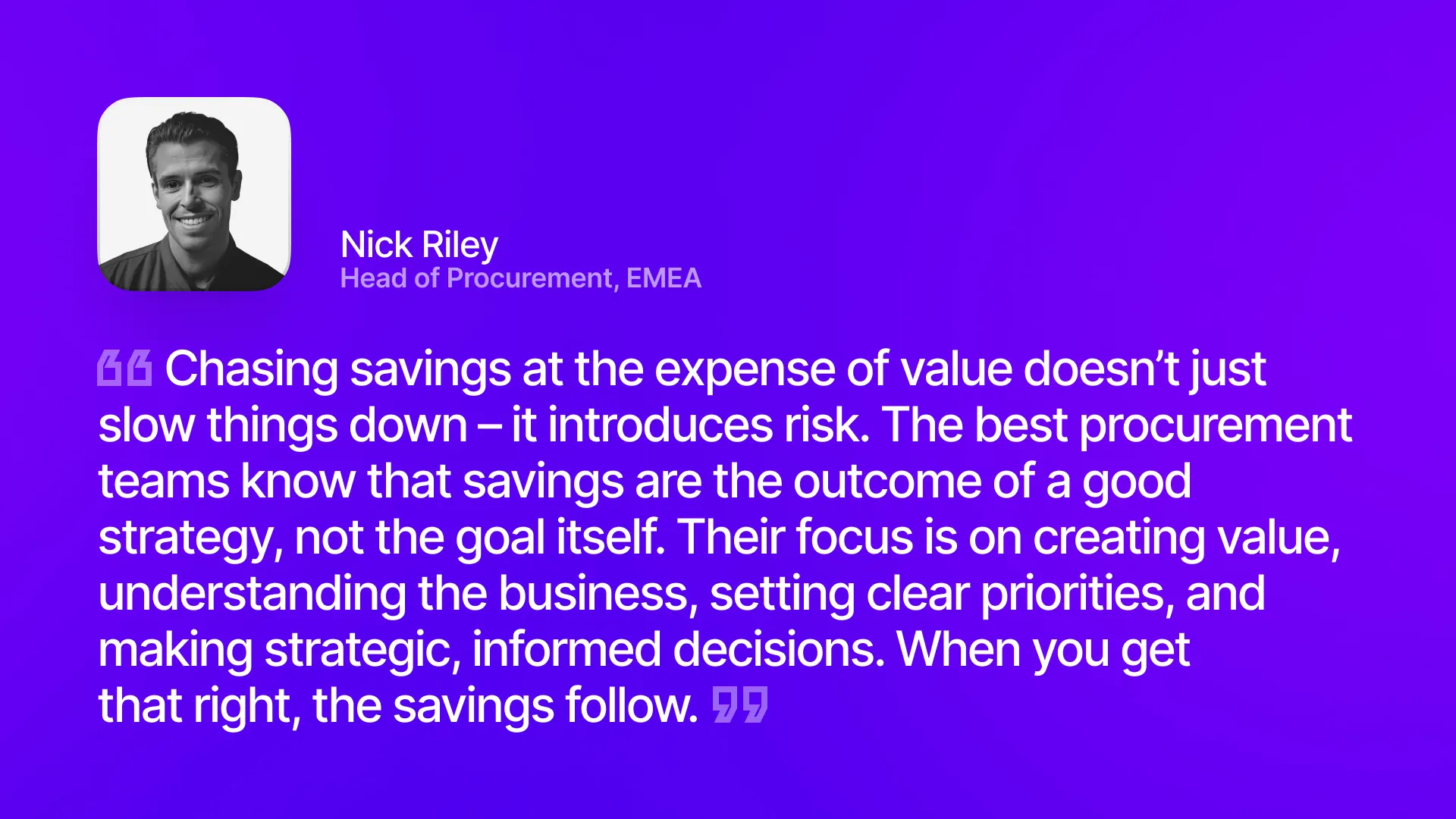
Peer benchmarking: What your cohort is using matters
Knowing which tools other similar companies are buying – and how they’re performing – adds a further layer of market insight.
Peer benchmarking in procurement specifically enables you to:
- Understand the industry standard for companies in your industry and with similar needs.
- Identify the tools that may be underperforming or are becoming less relevant.
- Identify emerging vendors gaining traction with your peers.
How to use supplier benchmarking insights in SaaS negotiations
Here are some of the key ways you can utilize both supplier pricing and capability benchmarking data to strengthen your SaaS negotiations.
1. Anchor negotiations with market data – Use pricing benchmarks to reset expectations and counter vendor list prices with actual data. Open the conversation with something like:
“We’ve seen companies of our size paying 20-30% less for the same subscription and with similar contract terms. Can you help me understand why we’re being quoted so much more?”
2. Time your negotiations strategically – Leverage benchmark insights to align your negotiations with periods of greater vendor discounting, for example quarter-end.
3. Establish a BATNA that includes functional alternatives – Benchmark capabilities to identify viable alternatives, giving you leverage and flexibility to walk away if needed.
4. Negotiate renewals with a long-term view – Use data to align renewals with future needs – securing flexibility, cost control, and removing auto-renewal risks, for example vendor lock-in.
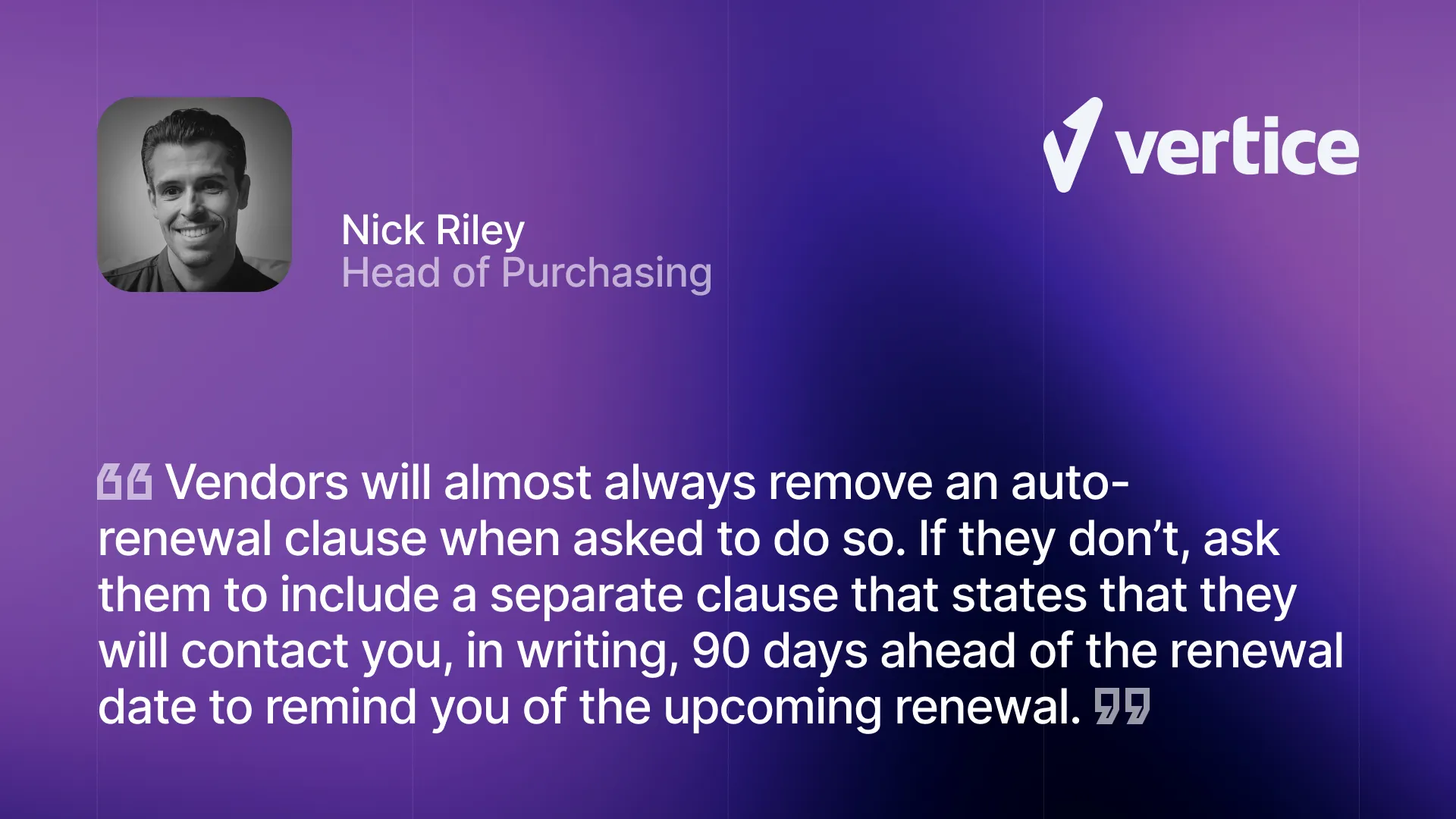
See a full list of terms that can be negotiated within a contract
5. Incorporate capability benchmarking into vendor selection – Assess whether a vendor truly meets your current and future needs – beyond just the cost. This involves comparing product features, integration options, performance, and overall fit within your technology ecosystem. Doing so ensures you're not just negotiating the best price, but also securing a solution that drives long-term value and mitigates the risk of having to switch vendors down the line.
How to access procurement benchmarks
Getting the right benchmark data starts with choosing the right source. You have two main options:
- Pre-packaged benchmarks: Tools that offer general market averages and discount ranges. These are good for quick reference but often lack nuance and deal specificity.
- Tailored benchmarks: Customized to your business size, industry, and requirements. This gives you deeper insight into what similar companies are paying and how vendors stack up beyond just price — including features, risks, and fit.
For the most strategic outcomes, high-performing teams rely on tailored benchmarks to negotiate smarter, reduce vendor risk, and unlock long-term value.
Benchmark your procurement maturity and get tailored recommendations for improving procurement's value across your organization
Consider outsourcing negotiations for better outcomes
For lean procurement teams, outsourcing key functions can unlock greater efficiency, deliver better outcomes, and maximize strategic value.
Some of the specific benefits include:
- Access to real-time benchmarking data – Any reputable outsourced procurement provider will have access to reliable, real-time benchmarks that can be leveraged to secure the best pricing and terms on any contract. This kind of procurement benchmarking intelligence is fundamental when aiming for optimal results across a large, complex tech stack.
- Substantial time savings – Most procurement teams are under immense pressure to deliver value, but simply don’t have the time to manage complex procurement processes, evaluate vendors, and negotiate each and every contract. Procurement providers take this pressure away by handling as much or as little of these processes for you.
- Access to specialized knowledge and skills – Outsourcing procurement allows you to leverage specialized vendor, market, and negotiation expertise.
- Shuttle diplomacy – A neutral third-party negotiator can smooth over complex vendor relationships, facilitating better communication and fostering long-term partnerships without internal biases.
- A more streamlined procurement process – The best outsourced providers will integrate advanced procurement technologies, enabling you to automate approvals, track contract renewals, and improve the overall efficiency of your procurement cycles.
- Risk mitigation and better contract terms – Experienced negotiators will advise on the best vendors, by assessing vendor stability and performance, mitigating potential risks and securing more favorable terms, reducing future uncertainties and costs.
Outsourcing allows procurement teams to not only handle the sheer volume of negotiations but also to refine their approach, ensuring that each deal is optimized for both cost and long-term value.
See how one company saved 115 hours on negotiations in the space of a few months
Using procurement benchmarks to drive strategic value with Vertice
Procurement teams today need to move beyond a price-only mindset. The best outcomes come from balancing cost with fit, risk, and overall business alignment.
At Vertice, we provide a white-glove procurement benchmarking and negotiation service built specifically for time-strapped procurement leaders. Unlike platforms that offer static data and leave the heavy lifting to you, we manage negotiations end-to-end.
Our expert buyers are in-market every day, negotiating live deals with the same vendors you're working with. We know which pricing levers to pull, what discounts are achievable, and when to push – all tailored to your unique circumstances.
But it’s not just about price. We optimize contract terms, flexibility, and structure to ensure you're not only saving money but also gaining long-term value and reducing operational risk.
As a procurement orchestration platform, we help your team become more efficient, make smarter decisions, and drive strategic business value.
Why not take self-guided tour of the platform yourself to learn more about our capabilities and understand what makes Vertice the ideal procurement partner.
.webp)




